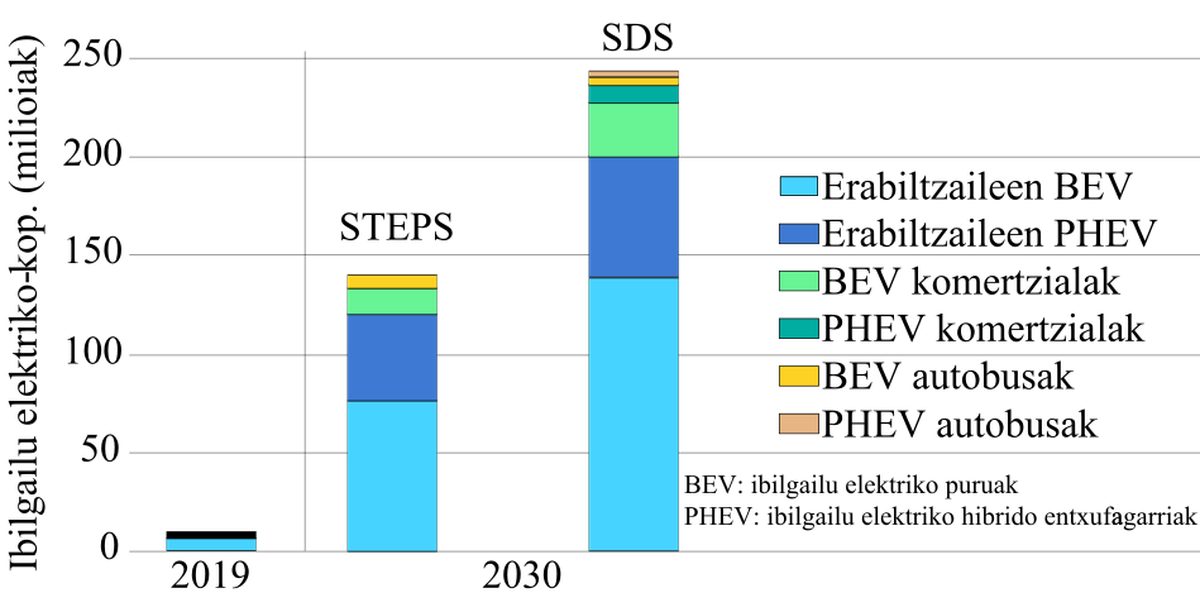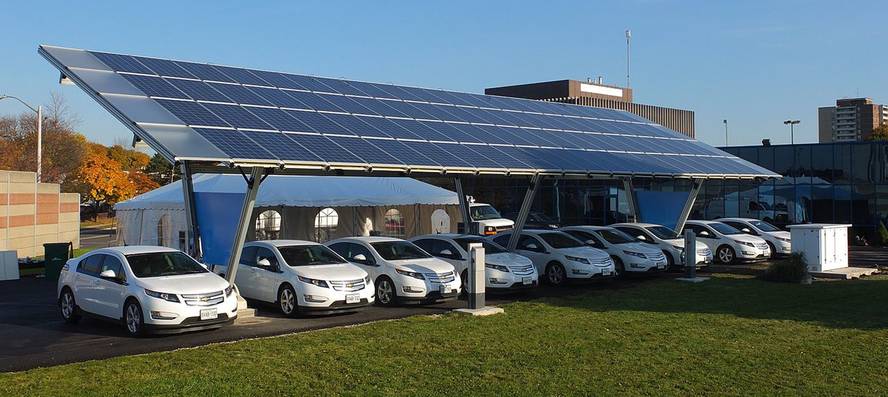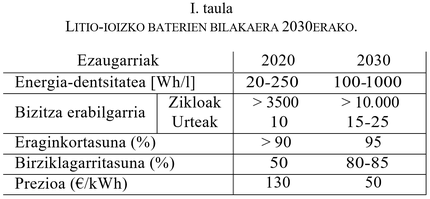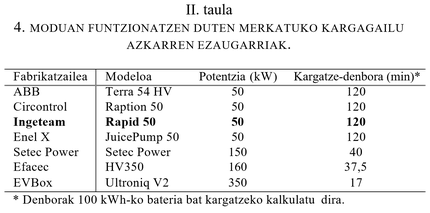The trend of electric vehicle: towards 2030
We see more and more electric vehicles on the streets and TV commercials. But how much do we have to wait to buy an electric vehicle? Are they profitable? Are they worth it? There are many questions and distrust that arise around the electric vehicle. This article addresses some of the concerns of this changing market that includes electric vehicles, with a focus on 2030.
Context of the electric vehicle
Environmental protection has become one of the main concerns of social, political and scientific actors concerned with greenhouse gas emissions. The long-term strategic vision of the European Commission indicates the trend that greenhouse gas emissions should have to a modern, competitive and climate-neutral economy, as it is intended to prevent the temperature of the planet from increasing by 2050 by more than 1.5°C. The International Energy Agency (IEA) foresees that, if not acted, greenhouse emissions will double by 2050. Currently, the transport sector generates about 28% of total emissions. In this context, the implementation of the electric vehicle can report great benefits. Given the above, there are several possible situations of evolution of the stock of electric vehicles. According to the International Energy Agency (IEA), by 2030 there may be 140 million electric vehicles in the scenario of declared global policies (STEPS) or 245 million in the scenario of sustainable development (SDS). In any of them, compared to the current situation, the number of electric vehicles is expected to increase considerably.

According to the studies carried out, the lack of autonomy of the vehicles and the time of charge of the electric vehicle are what most worries the buyers of electric vehicles. Globally, researchers and industry are making great efforts to increase the autonomy of electric vehicles and reduce charging times. In the short term, a significant increase in the fast charging infrastructure of electric vehicles1 is expected. To this trend must be added vehicle manufacturers, which is useless if the presence of fast chargers does not allow these load speeds.
Currently, most of those who choose to purchase the electric vehicle have a garage plot with possibility of charging in the parking hours of the vehicle. However, it is expected that in the near future the fleet of public and private chargers will be relatively large, so consumers without a garage will be able to charge the electric vehicle more easily. Seeing what an electric vehicle can become can help the final consumer in future purchasing decisions. In this context, the objective of this article is to publicize the trend of the two aspects that most concern consumers of electric vehicles (autonomy and charging time) in the next decade.
Batteries in the near future
Currently, batteries account for about 35% of the price of electric vehicles, so the electric vehicle still has no economic options. By 2030 the price of the batteries is expected to be reduced to 50 €/kWh, far from the current 130 €/kWh, which will mean an improvement in the price of the electric vehicle. According to the European Association of Automotive and Industrial Battery Manufacturers (EUROBAT), batteries are expected to have an energy density four times higher than the current one by 2030, which means that the same vehicle will have a range four times greater than the current one for the same battery volume. On the other hand, experts predict that the battery life will last up to 25 years (currently 10 years) and the recyclability of the batteries is expected to reach 85%. The latter would be good news for the planet. If all this is not enough, the efficiency of the batteries is expected to increase slightly and improve from 90% to 95%. With all these characteristics it can be concluded that the batteries will improve significantly, which will mean a strong boost to the technology of the electric vehicle, both in terms of the autonomy of electric vehicles and the final price.
Charging times: plug in, charge and continue
When talking about the charging times of an electric vehicle, you basically have to consider two aspects in the system: the charging forms and the power of the charging stations. There are currently four ways of charging electric vehicles defined by standards and standards:
- Mode 1: In this basic charging mode, the connection between the electric vehicle and the network is made by a conventional Schuko type power outlet. Therefore, there is no communication between the electric grid and the electric vehicle. The maximum recommended current for long loads is 10 A (2.3 kW). In this type of load, the installation usually has differential and magnetothermal protection. It is used for charging small power and size vehicles, such as bicycles and electric motors of low power and low battery capacity. However, it can also be used to charge electric vehicles with high capacity batteries and power, although it is not the best way.
- Mode 2: in this case, unlike mode 1, the connection between the electric car and the network is not correct. The connection to the network can be made with connectors of type 16 A or 32 A of low voltage type Schuko or EVE/CETAC. During the load a maximum power of 70 A (17.5 kW) can be obtained in the single-phase voltage and 63 A (30.2 kW) in three-phase 2. In this charging mode it is necessary to have differential and magnetothermal protection, but also in the cable there is a safety system implemented to control the reliability of the connection of the electric vehicle and establish load parameters.
- Mode 3: The main difference between this mode and mode 2 is found in communication: Charging mode 3 uses a charger designed specifically for charging electric vehicles (1. Type 2 or 3), and as in mode 2, a maximum power per phase can be obtained between 70 A (17.5 kW) and 63 A (30.2 kW) in single-phase voltage. The protections will be introduced into the charging infrastructure itself to allow additional functions such as continuous ground check, direct connection verification, load activation and deactivation, and the possibility of choosing a charging power (depending on user preferences or specific vehicle needs).
- Mode 4: This recharge mode is not performed with alternating current, 1. As with modes 2 and 3, in this case the load is carried out in direct current. This form of load corresponds to fast charging stations in direct current, made with CHAdeMO or CSS Combo-2 connectors, generally supporting load powers between 50 kW and 250 kW, although currently the standard IEC 62196-3:2014 supports reof up to 350 kW. This mode, like charging mode 3, includes in the infrastructure the necessary protections and additional communication functions: continuous ground check, direct connection check, load activation and deactivation, and possibility of choosing a charging power (depending on user preferences or specific vehicle needs).

By 2030 these standards are expected to allow higher power levels. Given the current concern of users for charging time, it would be normal for standards to include higher power systems in the coming years.
According to several studies, filling the fuel tank of a combustion vehicle with a range of 600 km takes an average of 5 minutes. In the smoke of electric vehicles, taking as an example a 350 kW charging system (maximum standardised power), we would manage to charge a Toyota Prius car (with a battery of 8.8 kWh and a range of 40 km) in a minute, while a Tesla Model S (battery of 100 kWh and a range of 610 km) would charge in 17 minutes. Thus, today, comparing the filling time of gasoline, users of electric vehicles would “lose” 12 minutes per load.
So what? Is it worth buying an electric vehicle today? Or should we wait?
The answer seems complex, but it is increasingly easier to answer this question. If it is to combat climate change, the answer is total, yes, of course! Looking at the personal economy, if it is to make short journeys in the day to day and we have a place of load (for example, at home or in the company) it is worth it. However, if we visit with regularity a few distant objectives, we should look well at the location of the recharge systems in this route, so we should organize the tour. In this context, the Smart Mobility plan of the Iberdrola group constitutes a decisive step in the development and deployment of the electric vehicle in Spain. By 2023 it provides for the installation of 2,500 refueling stations in the main highways and corridors of Spain and in the public access spaces of the main cities. This plan provides for the launch of at least one fast charging station every 50 km, thus ensuring the possibility of autonomous travel throughout the country.
In order to deepen this analysis, it must be taken into account that the electric vehicle has two economically profitable fundamental aspects. The first is the efficiency of the electric vehicle. The peak of a combustion vehicle requires an average of 5 liters to travel 100 km, with an equivalent energy of 45 kWh. However, an electric vehicle only needs about 15 kWh. Taking into account the current costs of energy and gasoline, a quick calculation allows us to appreciate that combustion vehicles spend 6.5 € for 100 km and 1.3 € for electric vehicles, throughout their lifetime (250,000 km) 16.250 € and 3.250 € respectively. The second aspect is that related to maintenance, according to a study carried out by the manufacturer Volkswagen, the savings over the lifetime can be around 2.500 € thanks to the reduced maintenance needs of electric vehicles. If we look at 2030, the answer to the question is even simpler. By then, the batteries will be better and cheaper on the market, which will mean that electric vehicles are directly cheaper than combustion vehicles. In addition, fast charging infrastructures will already be extended and user comfort will be guaranteed from the point of view of recharging. Consequently, it can be said that in 2030 the preferred option for users will be to purchase the electric vehicle, if not.
OBSERVATIONS:
1 Several Basque companies work in this area. Ingeteam has increased its charging point swine installation by 36% in the last month of February 2021.
2 Monophysics is the connection to the electrical network we have in homes, and the three-phase network is usually in companies where there are machinery.
BIBLIOGRAPHY
[1] “Global EV Outlook” (2020), International Energy Agency (IEA).
[2] “Battery innovation roadmap 2030” (2019), Association of European Automotive and Industrial Battery Manufacturers (EUROBAT).
[3] http://wallbox.eu/es/info/modos-de-recharge vehicles- electricos.html
[4] LÓPEZ, I. ET AL (2019). Next generation electric drives for HEV/EV propulsion systems: Technology, trends and challenges. Renewable and Sustainable Energy Reviews, vol. 114, pp. 1-23.
[5] “Smart mobility” (2020), Iberdrola.








